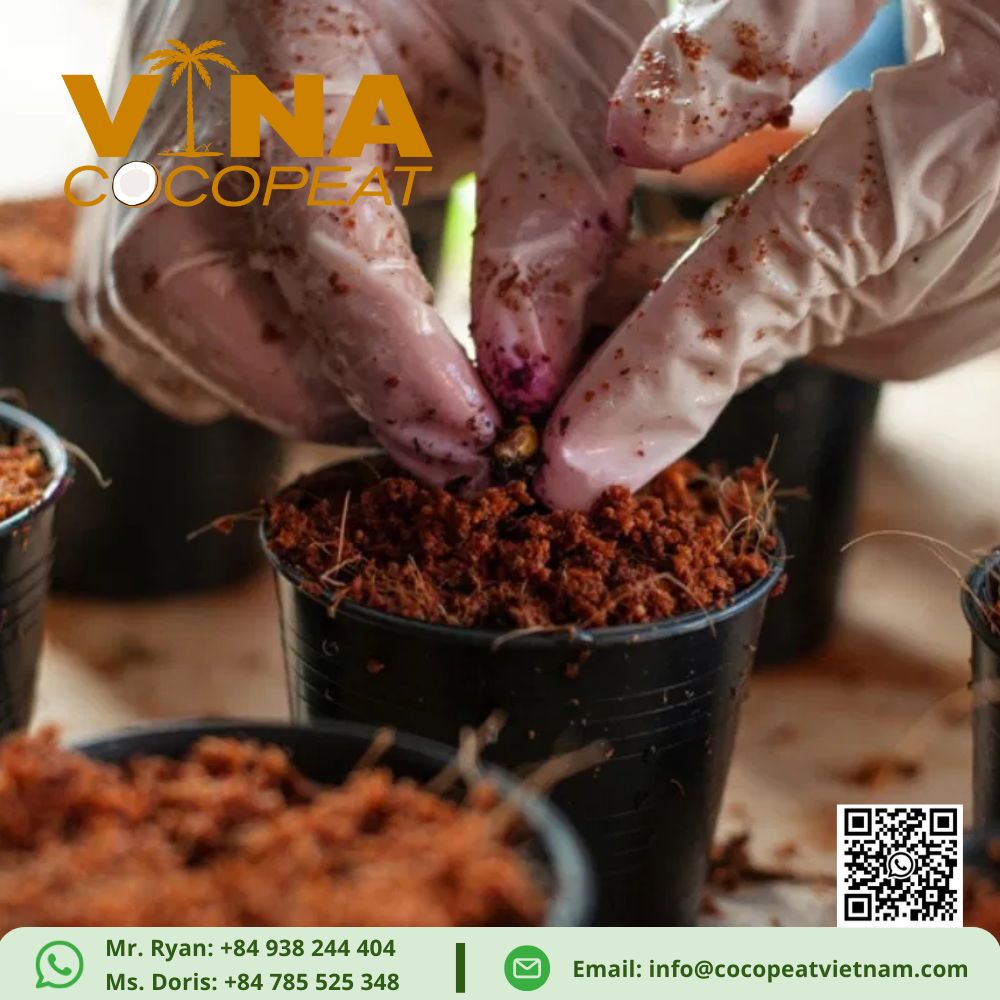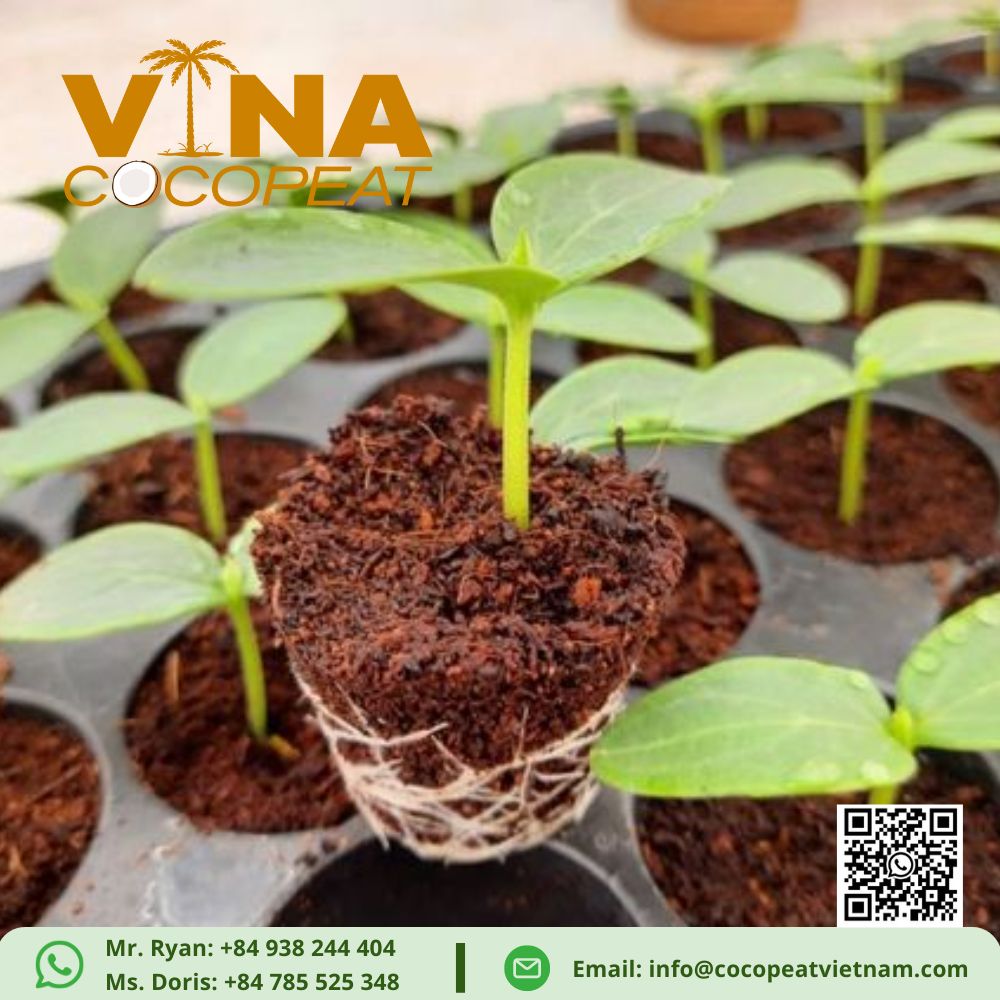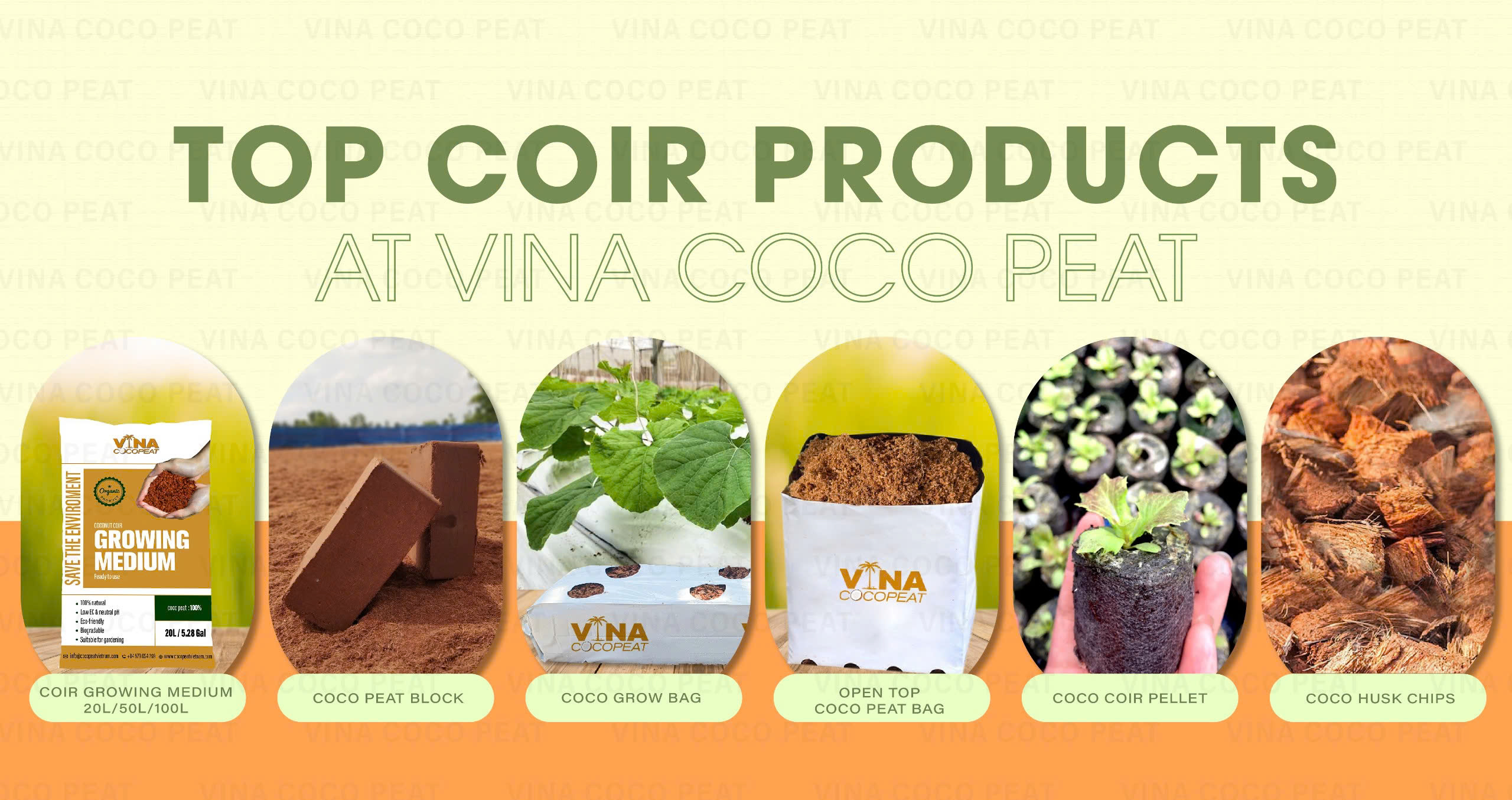We all want to be successful while cultivating plants. Nothing complements a home or yard like beautiful vegetation, and coco peat is an ideal medium for growing healthy plants. However, because coco peat is a relatively unknown composting alternative, many individuals are unsure how to use it in pots effectively. With a little more coaching, you will be well on your way to discovering the endless benefits of this fantastic planting material. With a little more coaching, you will be well on your way to discovering the endless benefits of this fantastic planting material and watching your plants thrive.
What is Coco Peat?
Coco peat is made from coconut husk, which is just the layer of pith that covers the husk of a coconut. In the last few years, many green-fingered people have discovered coco peat’s exceptional plant-growing powers as well as its eco-friendly properties, particularly its use as a peat-free compost.

Pros of Utilizing Coco Peat in Pottery
- The fundamental advantage of coco coir fiber and coco peat is that they are environmentally benign, especially when compared to other compost options such as peat moss. Derived from the layer of pith of a coconut, it is a wholly natural byproduct that would have been thrown away, making it one of the most environmentally friendly planting options available.
- Coco peat is totally reusable, which increases its environmental worth. It can be cleaned and strained after being used to grow plants in a single pot, restoring it to its original condition. This not only reduces its ecological impact but also assures that coco coir is a cost-effective alternative.
- Coco peat is extremely absorbent, storing approximately 30% greater quantity of water than ordinary peat. It is also wonderful at holding water and gently releasing it so that your plant can more effectively utilize it. This implies that once you have completed the planting, coco peat will handle much of the healthcare for you. You will find yourself watering the plants much less frequently than if you used a typical compost.
- Coco peat’s anti-microbial characteristics will help keep your plants healthy. It is also mold-resistant, which helps to protect your plants from illness and deterioration as they mature.
- Coco peat is also neutral in pH, ranging from 5.5 to 6.8. This is often regarded as the perfect pH for compost to discharge nutrients, and it eliminates the need for mitigating agents.
How to Establish a Garden in Pots.
Using coco peat to cultivate potted plants is pretty simple if you understand what distinguishes it from traditional composts. Coco peat arrives as a crunched solid ‘brick’ and only needs to be soaked in water for at least an hour to expand by up to 70-75 liters per block. After there, it merely needs to be torn apart, and it is ready to use.

To achieve the best results, line your selected pot with a coco liner trimmed to the appropriate size. Following this with your eco-friendly coco peat, and then plant your seeds toward the top of the soil, using the standard seed selection criteria. Before you moisten the compost, make sure to add any necessary plant foods to the soil, as coir does not contain any nutrients on its own. When watering, pump water directly into the soil until it begins to seep through. This will ensure that the coir is properly hydrated and able to support healthy plant growth.

You may then allow the very absorbent coco peat to do its thing. When you continue to water your plant, make sure to feel the soil with your fingertips. Plants in coco peat require far less watering than in traditional soil, and it is generally known that excessive watering can be fatal. Remember that once you have finished using the coco peat in your pot, it is easily recyclable.
Considerations to be cautious of when handling Coco Peat
While using coco coir to grow in pots has perks, there are certain guidelines to keep in mind to achieve the best outcomes.
- Coco peat does not contain any nutrients of its own. This is readily rectified by adding plant food to the pot prior to initial water intake. This helps to guarantee that your seedlings receive all of the nutrients they require.
- As it ages, coco peat can accumulate excessive levels of salt, which can impair plant growth. You can avoid this by selecting ‘low salt’ coco coir. This will ensure healthy growth and development for your plants.
- While coco peat is a 100% organic material, it is quite tough, which means it is not entirely biodegradable. It will ultimately decompose, but not quickly. Rather than tossing away your coco coir, consider reusing or recycling it.

Contact VINA COCO PEAT if you are looking for coco peat suppliers in Vietnam.
Ms. Doris: +84 785 525 348 (ZALO, WHATSAPP, WECHAT, LINE)
Mr. Ryan: +84 961 071 137 (ZALO, WHATSAPP, WECHAT)
한국 영업 담당자: +84 969 273 598 (Ms. Lan)
中文: +84 397 317 401 (Ms. Vi)
Email: info@cocopeatvietnam.com – www.cocopeatvietnam.com
